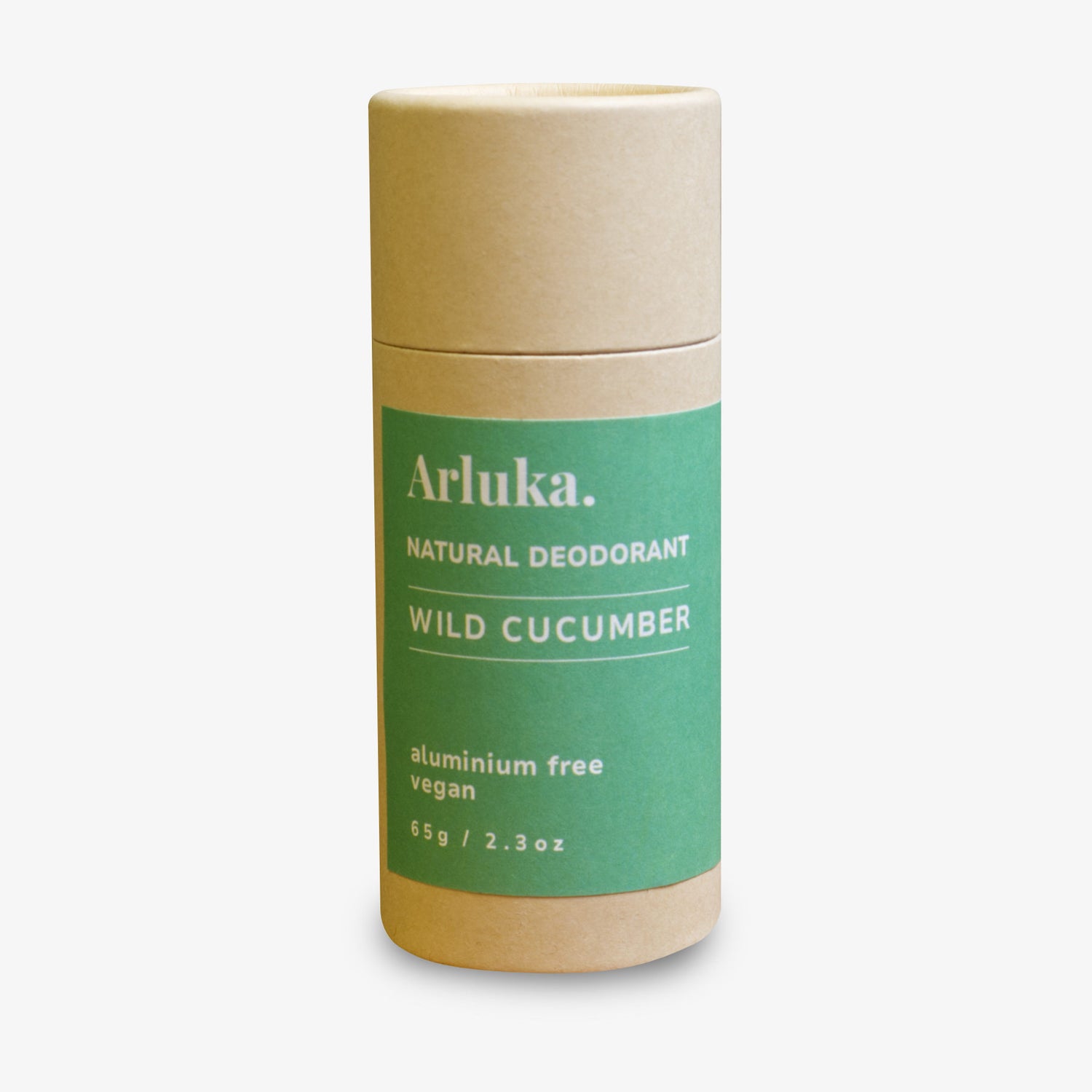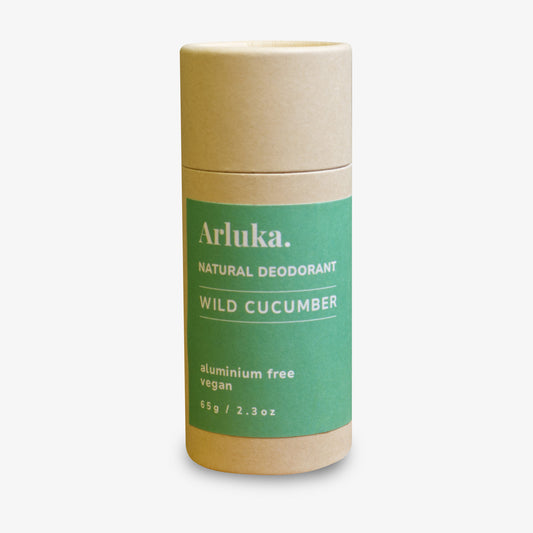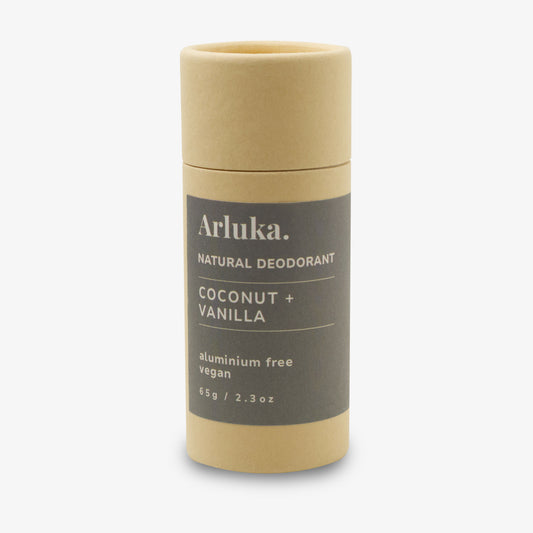Magnesium Hydroxide. You’ve seen it in natural deodorant. But why is it there? What does it do? Is it safe?
Let’s dive into Magnesium Hydroxide, so you can make an informed decision when purchasing magnesium hydroxide natural deodorant.
Table of Contents
- What Is Magnesium Hydroxide?
- What Does Magnesium Hydroxide do in deodorant?
- Bacteria Be Gone!
- Magnesium Hydroxide Vs Sodium Bicarbonate?
- Is magnesium hydroxide deodorant safe?
- Magnesium Hydroxide deodorant side effects
- Magnesium Carbonate Hydroxide in deodorant
- How Much Magnesium Hydroxide To Use In Deodorant
What Is Magnesium Hydroxide?
Magnesium Hydroxide, Mg(OH)2, is a naturally occurring compound. It is found in nature as the mineral Brucite. Magnesium Hydroxide is used as an antacid to help remedy heartburn. Ever heard of Milk of Magnesia? It’s a well-known antacid and is a suspension of Magnesium Hydroxide.
What Does Magnesium Hydroxide do in deodorant?
Magnesium Hydroxide is used in natural deodorant, such as Arluka Coconut Vanilla Natural Deodorant, as a broad-spectrum antibacterial. Some popular brands that contain it are Wild deodorant and Native deodorant. Magnesium Hydroxide alters the pH of the skin to make it more alkaline. But how does this relate to body odour?
Sweat has no significant smell. Body odour occurs when bacteria living on your skin break down your sweat. The resulting compounds such as ammonia and fatty acids are the cause of your stinky armpits.
We need to do something about those pesky bacteria. Enter Magnesium Hydroxide.
Sweat has no significant smell. Body odour occurs when bacteria living on your skin break down your sweat. The resulting compounds such as ammonia and fatty acids are the cause of your stinky armpits.
We need to do something about those pesky bacteria. Enter Magnesium Hydroxide.
Bacteria Be Gone!
Bacteria thrive in a neutral pH environment. Skin is weakly acidic, with a pH of around 5.5, This means your skin is close to an ideal environment for bacteria to grow.
Magnesium Hydroxide has a pH of between approximately 9-12. This is significantly more alkaline than your skin. By applying a thin layer of magnesium hydroxide you’re making your skin more alkaline. This inhibits the overgrowth of bacteria.
Less bacteria = less smell.
Magnesium Hydroxide has a pH of between approximately 9-12. This is significantly more alkaline than your skin. By applying a thin layer of magnesium hydroxide you’re making your skin more alkaline. This inhibits the overgrowth of bacteria.
Less bacteria = less smell.
You’ve now tackled the root cause of body odour. Thanks Magnesium Hydroxide. We love this stuff so much we used it as a primary active ingredient in all our deodorants, including our natural deodorants for men.
Magnesium Hydroxide Vs Sodium Bicarbonate?
Sodium Bicarbonate (bicarb) is a common natural deodorant ingredient. Like Magnesium Hydroxide, it works as an antibacterial. Raising the pH of the skin to inhibit bacterial overgrowth.
Bicarb can be very irritating in many people. The result? Red, itchy, irritated armpits.
Learn more about bicarb in the article - why doesn't natural deodorant work for me? and our article about Sarah's Day Deodorant.
Like bicarb, Magnesium Hydroxide is alkaline. In fact it’s even more alkaline than bicarb. Yet, it doesn’t cause irritation in most people. Why is that?
Bicarb can be very irritating in many people. The result? Red, itchy, irritated armpits.
Learn more about bicarb in the article - why doesn't natural deodorant work for me? and our article about Sarah's Day Deodorant.
Like bicarb, Magnesium Hydroxide is alkaline. In fact it’s even more alkaline than bicarb. Yet, it doesn’t cause irritation in most people. Why is that?
Magnesium Hydroxide is less soluble in water. It takes longer to dissolve in your sweat. This means your skins pH is raised in a slower, more sustained manner. Making Magnesium Hydroxide gentler on the skin, and less likely to cause irritation.
Both Magnesium Hydroxide and Bicarb can be very effective at controlling body odour. However too much bicarb may cause irritation. If your natural deodorant is causing you a rash it's probably got too much bicarb in it.
Both Magnesium Hydroxide and Bicarb can be very effective at controlling body odour. However too much bicarb may cause irritation. If your natural deodorant is causing you a rash it's probably got too much bicarb in it.
Look out for products with a balanced amount of Magnesium Hydroxide and bicarb. At Arluka we find a well formulated combination of both bicarb and Magnesium Hydroxide to be highly effective and non irritating.
Is magnesium hydroxide deodorant safe?
Yes. For most people Magnesium Hydroxide deodorant is safe.
Magnesium Hydroxide is a generally recognised as safe (GRAS) food ingredient. It is approved for use in supplements and as a pH control agent in food.
Magnesium Hydroxide does not appear to absorb through the skin.
It is uncommon for Magnesium Hydroxide to cause irritation or allergic reactions when used topically. In the rare event of an allergic reaction stop use and consult your doctor.
Magnesium Hydroxide does not appear to absorb through the skin.
It is uncommon for Magnesium Hydroxide to cause irritation or allergic reactions when used topically. In the rare event of an allergic reaction stop use and consult your doctor.
Have kidney disease or a medical condition that requires you to avoid Magnesium? Speak to your doctor before using any magnesium-containing products.
Magnesium Hydroxide deodorant side effects
There is little data supporting negative reactions to topical Magnesium use. Reactions to Magnesium Hydroxide in natural deodorant are uncommon.
Of course, allergic reactions are still possible. If you experience any of the following issues discontinue use and consult your doctor immediately:
- Rash
- Hives
- Itching
- Redness
- Blisters
- Tightness of chest
- Trouble breathing
Most documented Magnesium Hydroxide side effects relate to oral use. I.e, swallowing it.
Magnesium Hydroxide is a generally recognised as safe food and supplement ingredient. Yet it may cause the following side effects when consumed by some people:
Magnesium Hydroxide is a generally recognised as safe food and supplement ingredient. Yet it may cause the following side effects when consumed by some people:
- Nausea
- Diarrhoea
- Vomiting
This is not a full list of side effects. If you experience any issues please consult your doctor immediately.
Magnesium Carbonate Hydroxide in deodorant
From time to time you may see Magnesium Carbonate Hydroxide in deodorant. Variations in the form of Magnesium result depending upon the source.
Let's look at an example. Deodorant brand Each & Every source their Magnesium from dead sea salt. Each & Every list both Magnesium Carbonate and Magnesium Hydroxide as ingredients their deodorant.
Let's look at an example. Deodorant brand Each & Every source their Magnesium from dead sea salt. Each & Every list both Magnesium Carbonate and Magnesium Hydroxide as ingredients their deodorant.
Other deodorants source Magnesium from Brucite. And list only Magnesium Hydroxide as an ingredient.
According to EWG Magnesium Carbonate Hydroxide is a safe ingredient. Classified as not expected to be toxic or harmful.
How Much Magnesium Hydroxide To Use In Deodorant
Making your own Magnesium Hydroxide deodorant? Great stuff. But how much Magnesium Hydroxide should you use in deodorant?
I reviewed some recipes. The typical amount of Magnesium Hydroxide used is 10-30% by weight. Here are the steps I would take to determine how much Magnesium Hydroxide to use in your deodorant.
- Pick an amount, somewhere between 10-30%
- Make your recipe
- Test the deodorant for effectiveness
- Not effective? Re-melt and add more Magnesium Hydroxide.
- Repeat. Increasing the Magnesium until it’s controlling your body odour.
By slowly scaling up the amount of Magnesium Hydroxide you can find the amount that works for your body.
If your first batch works well you can begin scaling down the amount of Magnesium Hydroxide. Here's how:
If your first batch works well you can begin scaling down the amount of Magnesium Hydroxide. Here's how:
- When you make your next batch reduce the Magnesium Hydroxide by 5-10%.
- Still effective? Great. Reduce it by another 5-10% on your next batch.
- When you reach the point where it is no longer effective you don’t have enough Magnesium. The last effective recipe is the right amount of Magnesium Hydroxide for you.
Magnesium Hydroxide is a relatively expensive ingredient. Experimenting will allow you to find the right amount for your body. And save you money in the long run.
There you have it. Magnesium Hydroxide is a fantastic natural deodorant ingredient. It's safe, effective, and non-irritating.
Switching to natural deodorant? Give a Magnesium Hydroxide deodorant a go and let me know what you think in the comments!
There you have it. Magnesium Hydroxide is a fantastic natural deodorant ingredient. It's safe, effective, and non-irritating.
Switching to natural deodorant? Give a Magnesium Hydroxide deodorant a go and let me know what you think in the comments!





